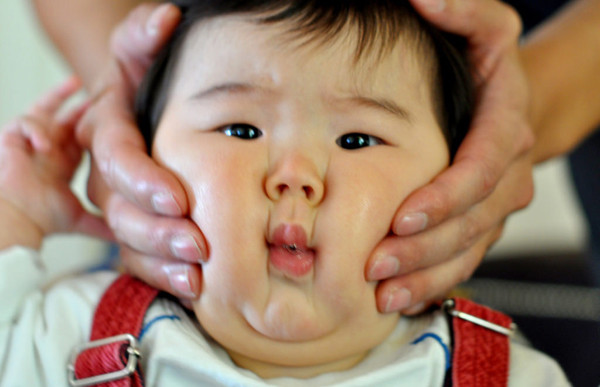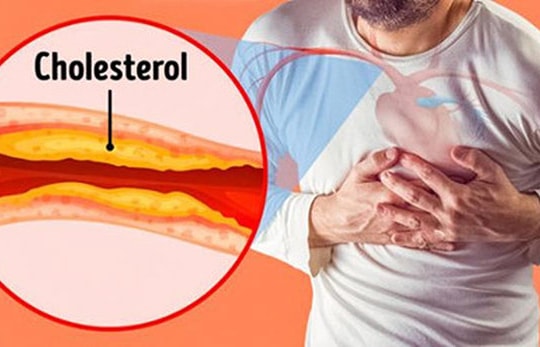Obese urban children, parents still force-feed
The rate of childhood obesity in inner city Ho Chi Minh City has exceeded 50%, in Hanoi it has exceeded 41%, and over 50% of parents do not think their children are overweight.
The latest results of the childhood obesity survey were announced by Dr. Bui Thi Nhung, School Nutrition Department, National Institute of Nutrition, at the conference on preventing obesity and overweight in children held in Hanoi.
50% have dyslipidemia
Dr. Nhung said that obesity among Vietnamese children is increasing rapidly, especially in big cities. Over the past 20 years, obesity in Hanoi and Ho Chi Minh City has increased by 30-40% respectively.
Specifically, in 1996, the rate of overweight and obese children in Hanoi and Ho Chi Minh City was 12%. 13 years later (2009), this rate was about 27%.
 |
| The rate of obese Vietnamese children is increasing rapidly. |
By the 2014-2015 period, this number in Ho Chi Minh City's inner city increased to over 50%, Hanoi's inner city increased to 41%, while the general goal in Vietnam's nutrition strategy until 2020 is to reduce the obesity rate in children to below 10%.
The consequences of overweight and obese children are a high risk of non-communicable diseases such as type 2 diabetes due to glucose intolerance, cardiovascular disease, high blood pressure... Tests on 500 obese children showed that the rate of dyslipidemia was up to 35-50%.
In addition, according to Dr. Tu Ngu, General Secretary of the Vietnam Nutrition Association, obesity is also the cause of sleep apnea, mechanical pseudotumor cerebri headaches, fatty liver degeneration or steatohepatitis...
However, according to a survey in Hanoi, up to 53% of parents do not know their children are overweight or underestimate their weight by one level compared to reality.
The research team's survey of 600 children in Hanoi, Hai Phong, and Da Nang showed that only 2% of children were underweight, but 46% of mothers thought their children were still underweight. When their children were overweight, parents still considered their children normal.
Or when investigating school meals, parents always say their children are lazy eaters, but when comparing height and weight, the children are actually several kilos overweight.
Obesity is still malnutrition
Dr. Tu Ngu analyzed that the main reason for the rapid increase in childhood obesity is due to the disruption of family meals (accounting for 90%) and children being lazy to exercise. Children currently eat too much fast food, school meals have too much protein, and lack fiber and micronutrients.
A research team at the National Institute of Nutrition said that the ideal diet for students is to ensure 3 main meals and 1-2 snacks. Of which, breakfast accounts for 25-30%, lunch 30-40%, afternoon 5-10%, dinner 25-30%.
However, the latest survey results in Ho Chi Minh City show that the proportion of dinner accounts for 34-38%, which increases the fat accumulation process, leading to overweight and obesity.
Protein intake in meals is exceeding recommendations, 15-30% higher in the 6-15 age group, 53% higher in the 16-18 age group for males, and 33% higher for females.
Meanwhile, children's diets contain very little fiber, reaching less than 50% of the recommendation, and the amount of vitamins and micronutrients only reaching 52-91% of the need.
 |
| Dr. Nguyen Thi Lan Phuong. Photo: T. Hanh |
Dr. Nguyen Thi Lan Phuong, Institute of Nutrition, further warned that many families are giving their children too much soft drinks and carbonated drinks. A survey in Hai Phong showed that many children drink 1-3 cans/day, increasing the risk of being overweight and obese by 2-6 times.
The recommended limit is 1-2 cans per week because carbonated soft drinks contain a lot of simple sugars. Consuming more than 5% of total daily energy can cause metabolic disorders, fat disorders leading to obesity.
Regarding the reality of treating childhood obesity, Dr. Luu Thi My Thuc, Head of the Nutrition Department, National Children's Hospital, admitted that it is very difficult because parents do not think obesity is a disease.
“We need to define obesity as a disease, and if you have a disease, you must treat it. Because people do not think obesity is a disease, they only talk about preventing overweight and obesity, but not about treating obesity,” said Dr. Thuc.
To prevent obesity, the most effective way is to encourage healthy diets and increase physical activity in schools, an average of 60 minutes per day. In addition, the organization guides units providing meals for students to adjust the structure of meals, avoiding the abuse of sugar and fat.
Children under 2 years old should not watch TV, older children should only watch TV for less than 2 hours per day or less than 14 hours per week. In addition, children need enough sleep, from 0-5 years old, children should sleep 11 hours per day; 5-10 years old, children should sleep 10 hours per day; and children over 10 years old should sleep 9 hours per day.
According to vietnamnet
| RELATED NEWS |
|---|


